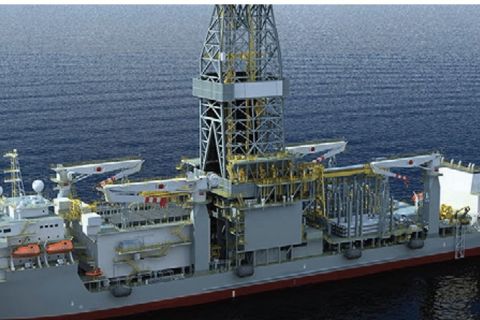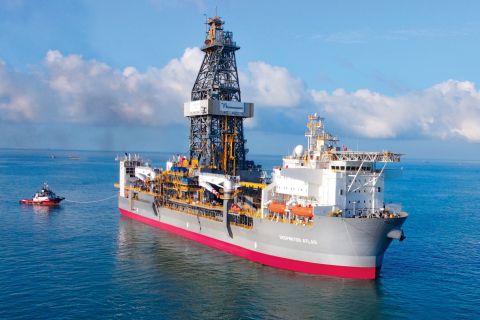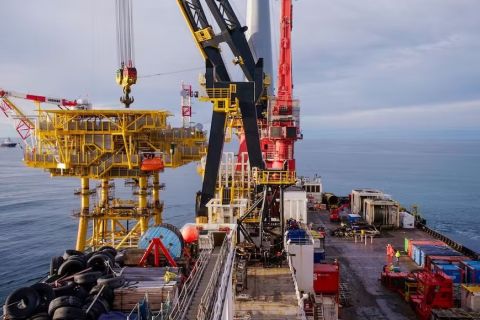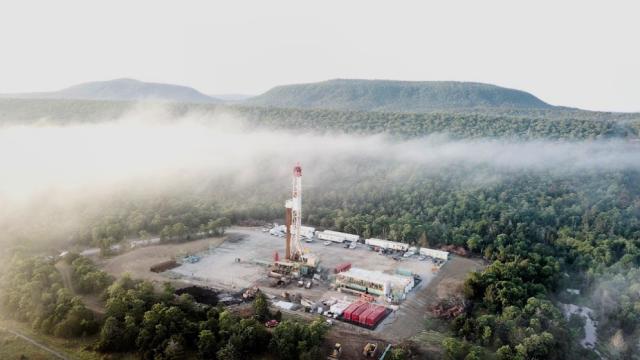
Fog surrounds operations in Sho-Vel-Tum Field in Garvin County, Okla., where various companies are drilling again. Ventana Exploration & Production has scattered interests there and is studying the area. (Source: Joel Acosta, Crescent Consulting)
[Editor's note: A version of this story appears in the December 2019 edition of Oil and Gas Investor. Subscribe to the magazine here.]
Like a kind of corporate camouflage, Birch Resources LLC’s pristine white foyer, drawn with angular lines and a suggestion of marble, greets visitors high above downtown Houston.
But just a few steps past the receptionist desk, the 14th floor suite transforms, jarringly, into what looks like a Texas ice house.
A few employees dressed in office casual are gathered around a big screen television, watching the Houston Astros play the New York Yankees on a late Tuesday afternoon in October.
The décor is partly Cheers with a few quirky touches: a yellow sign warning of “High Pressure,” an arcade-style Big Buck Hunter video game, a foosball table and an automatic coffee machine that reluctantly administers lattes. The room is mostly the result of raiding junk shops for faded interstate signs, and it seems to fit perfectly.
For the past couple of years, the challenge for E&P companies has been existing in the oil and gas industry in the first place. Investors have demanded increased free cash flow with just enough capital to keep up production. Even a rumor of overspending or, worse, an acquisition, causes Wall Street energy traders to have a collective panic attack.
So it’s with a certain stubbornness—and optimism—that start-ups and entrepreneurs endure. In the Permian, Anadarko and Williston basins, a new wave of young companies headed by savvy CEOs has emerged. Private-equity-backed teams, such as Birch Resources, continue to push through the brambles of a prickly market in search of the improbable: a way to consistently make money.
Common among many of them is the realization that the drill and flip model is over. Instead, the companies are in it for the long haul.
Oil and Gas Investor interviewed the CEOs of three companies, each focused on different models in different basins.
Birch president and CEO Jason Cansler, leaning close, said the company’s success isn’t about his “grand vision” or a company pulled together by his “blood, sweat and tears.”
“This is really a story about a group of cross functionally complete partners who have been together for over five years, and we’ve worked the strategy hard,” he said. “Everybody in that group, and on our team, is responsible for where we sit today and certainly in terms of what they execute in the field, they’re more responsible than I am because they’re actually, physically doing something.”
Cansler adds, self-effacingly, “I make PowerPoint slides.”
‘Peel and eat’
For its size, Birch is running hotter than some midsized public companies. In mid-October, Birch’s operations in Howard and Martin counties, Texas, included a four-rig program complemented by two frack fleets, Cansler said. The company has filed more than 100 drilling permits in 2019, including 18 in October, according to Texas Railroad Commission records.
The Birch culture revolves around rigorous and continuous examination of assumptions, an acceptance of some uncertainty and a great deal of humility. Birch’s short-term strategy relies on spending more cash than it can put back in the register.
“We’re moving aggressively toward fully harvesting our acreage,” he said. “We’re outspending cash flow on purpose to pursue attractive single well and pad economics.”
Clearly, Birch was not built for the public markets. The team behind the relatively new private company has a deep bench of experienced shale architects and builders. The technical team has its roots in softball games played nearly 20 years ago between friends at Chevron Corp. who dreamed of starting their own company. Along the way, they worked at Wells Fargo’s A&D shop and got to know oil and gas dealmakers, including their current partners at Rock Oil Co. and Birch Resources.
Despite past success, Cansler said the company maintains a humble mentality—something his team picked up while they were still investment bankers doing a deal with George Solich’s team at FourPoint Energy LLC.
“We immediately recognized the strength of their positive culture and patterned ourselves after them,” he said. “There were eight or 10 of them, and they could not be more humble, gracious, collaborative with one another. They clearly knew more about the play than we did, but they were gracious about us exchanging information, and they understood their business.”
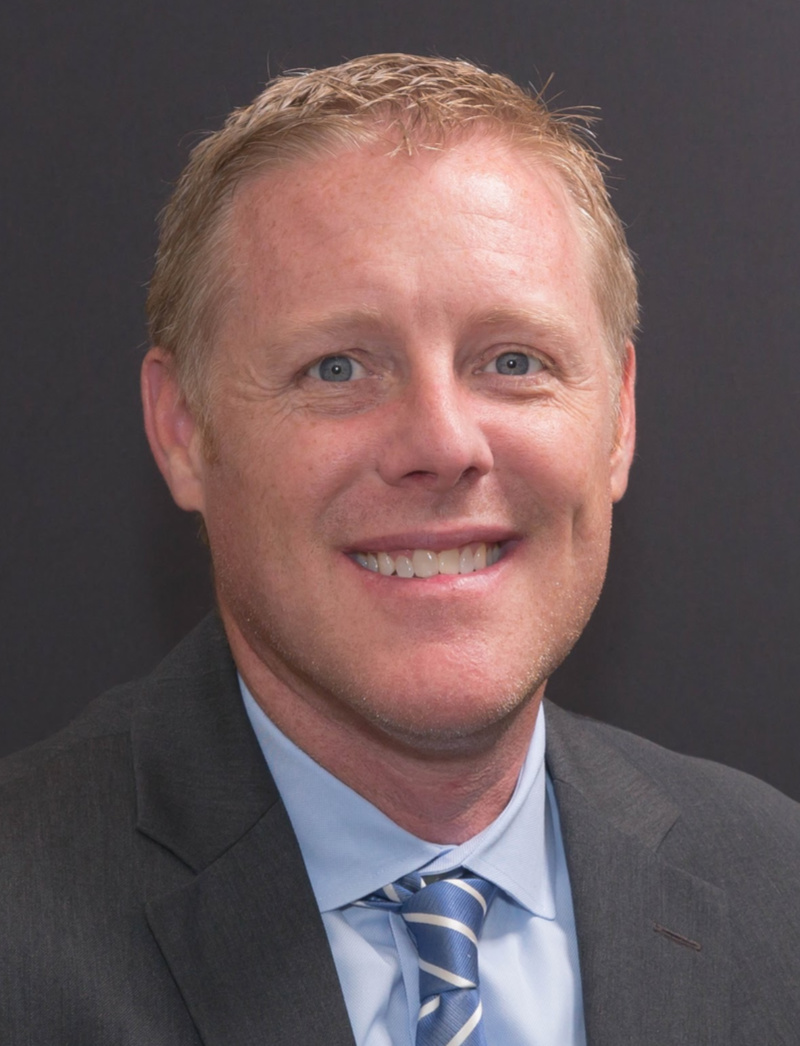
a story about a
group of cross
functionally
complete partners
who have been
together for over
five years, and
we’ve worked
the strategy
hard,” said Jason
Cansler, CEO of
Birch Resources
LLC.
Most of Birch’s team was formerly part of Rock Oil Holdings LLC, which in 2016 sold its Howard County, Texas, position to SM Energy for $980 million. Rock Oil chairman and CEO Kyle R. Miller, who led the effort, went on to pursue other challenges. Cansler and what remained of the Rock Oil team went on to pursue a two-pronged strategy: the “toehold and go,” and the “peel and eat.”
“We felt like in ’16 that we were at the backend of the private-equity build and flip strategy where you’re going to drill two or three wells to prove the concept,” he said, noting that most companies by then had decades worth of inventory to drill through. “We felt very strongly that small private teams like Rock needed to focus on a different part of the value segment in our business, and our strategy should very deliberately target these new areas.”
The “toehold” strategy involved buying bits of nonop leasehold across the Scoop/ Stack/Merge with the self-awareness that Birch didn’t yet have enough information to compete successfully on a big acquisition.
Rock would instead “deepen our knowledge base alongside of being organically involved in the run-up of the play,” Cansler said. “Naturally, we maintained a more conservative posture as we evaluated large acquisitions in Oklahoma, as we didn’t fully understand the play as much as our home base, which was the Midland Basin,” he said.
The company put together small tracts of land while competing for larger assets in the $200 million to $400 million range.
Rock worked on several larger deals but lacked enough technical and commercial clarity to bid down to a discount rate that would have been attractive. Cansler’s philosophy is that in an area thick with competition, the winning bidder should be the team that “knows the most about that area.”
Then, in April 2018, Cansler said the “stars aligned” and an opportunity emerged in the company’s former neighborhood in the Midland Basin. Breitburn Energy Partners LP had exited a long and bitter bankruptcy. As part of the restructuring, Breitburn sold off 17,500 net Midland acres to newly created Birch Resources. The leasehold directly abutted the acreage that Rock Oil sold to SM Energy.
The Midland position fits into Cansler’s peel and eat strategy. The goal is to capture the right asset, build a high performing team and match it with a capital program to fully and efficiently harvest the asset. This business plan creates a cash-flowing asset without any designs on an exit or monetization event.
“We weren’t trying to go find an acreage position to flip. We were trying to find an acreage position to drill,” he said. “And this one landed in such a way for us that we felt pretty strongly about the plan pretty quickly.”
While Birch was taking its time in Oklahoma, the team’s deep understanding of the Midland acreage allowed it to move into the company’s “pure acceleration” phase. “In this case, since we’ve been staring at this part of the earth for so long, there is so much comfort and competence as to what data underpinned our assumptions,” he said. “We fully recognize this is a very rare thing for us because it wouldn’t have happened in the same way in any other part of the world.”
In about 18 months, the company has built up production to more than 20,000 barrels of oil equivalent per day (boe/d). Birch intends to drill continuously for four or five years. “The end result will be a cash-flowing asset that you can sort of financially structure to the benefit of the shareholders and manage with a customized operational team after the rig program stops,” Cansler said.
“We felt very strongly that small private teams like Rock needed to focus on a different part of the value segment in our business, and our strategy should very deliberately target these new areas.”
—Jason Cansler, Birch Resources LLC
Roughly 20 years ago, Cansler started his career as a geologist at Chevron Corp., which he credits for widening his perspective on the oil and gas business. During his time there, he worked as a decision analyst, interpreting streams of information—from geology to production profiles to facility alternatives—that would eventually be tied into a tight economic story and presented to company decision-makers. The work called for collecting a range of assumptions across all functions, including midpoint assumptions as well as worst- and best-case scenarios.
“You would go, ‘jeez this investment is either the best thing in the world, the worst thing in the world, depending upon which one I use and the answers,’” he said.
But the real world is uncertain. Cansler quotes Voltaire—“Doubt is not a pleasant condition, but certainty is absurd.”—to underscore his point.
“You have to build a creative and flexible plan that identifies and manages key uncertainties so that downside cases can be averted and upside cases realized. Importantly, we must continuously and ruthlessly test our assumptions.”
Change to: Quiet strength
The map, spotlighting some of Oklahoma’s productive counties—Grady, McClain, Canadian, Kingfisher—is a little weathered, more a keepsake now that Ventana Exploration and Production LLC has far superior color maps. But Heather Powell, Ventana’s president and CEO, refuses to part with it.
“It’s extremely sophisticated,” Powell jokes in her Oklahoma City office. She gestures toward the circles on the map that were drawn using the bottom of a coffee cup and other bits that were cut and pasted using a glue stick. “It was a big arts and crafts project.”

CEO of Ventana
Exploration and
Production LLC,
initially declined
invitations to
be a manager,
saying “I want to
be responsible
for me.” That
changed after
years of working
for Chesapeake
Energy Corp.
founders Aubrey
McClendon
and Tom Ward
and, later, RKI
Exploration &
Production’s
founder, Ronnie
Irani.
The map includes stars that represent high-producing wells and a not-so-subtle reference to private-equity provider Starwood Capital Group, which Ventana was then trying to woo. The circles represent areas that Ventana wanted to stay near to as it continued to purchase nonop acreage.
Ventana eventually won backing from a trio of investors: Starwood, Equity Group Investments (EGI) and the Virginia Tech Foundation.
In April, Ventana’s investors raised about $100 million for Ventana II. In June of 2018, as the company became more A&D-focused, Powell took over as president and CEO.
Above Powell’s desk, painted onto the wall, is a quote by EGI founder and real estate tycoon Sam Zell. “If you’re really good at what you do,” it says, “you have the freedom to be who you really are.”
It’s a role she never planned to pursue though her career path gave her a close-up view of storied oil and gas CEOs. At Chesapeake Energy Corp., Aubrey McClendon ran the company with a familial touch; at Sand-Ridge Energy, Tom Ward gathered his small staff together in intimate weekly meetings; and at RKI Exploration & Production, she took note of founder Ronnie Irani’s subtle, democratic approach.
“Each place was smaller,” Powell said. “So there were some stepping stones. In a smaller-sized company, there are fewer people to share in the workload. But, also, your work each day really is impactful to the company and bottom line.”
Initially, Ventana had to overcome doubts that the company could efficiently purchase nonoperated acreage in Oklahoma. Potential backers didn’t see how acreage could be grabbed up with industry giants such as Continental Resources Inc. and Devon Energy Corp. leasing up large tracts. But Oklahoma law works to smaller companies’ advantage, Powell said.
“Once the big companies have the lion’s share to operate, say 60% or 70% working interest, then the low-hanging fruit is gone,” Powell said. “But the smaller landowners still haven’t been leased up.”
Oklahoma’s forced-pooling laws set minimum bonus terms to protect the landowners who haven’t leased for various reasons. If a company offers, for instance, $3,000 per acre with a take it or leave it note, Ventana comes in to offer a little more: $4,000 or $5,000 per acre.
Large companies also aren’t “willing to go and lease 30 people to get five acres” signed, Powell said. “They’re focused on operations and keeping rigs busy while we’re focused on the bottom position that hasn’t been leased up.”
After Ventana I was funded with a $65 million commitment, the company built a position in 18 months that included 5,000 acres and more than 500 wells. Ventana ended its A&D ventures, reserving about 20% of its capital for drilling costs. At that point, the company could have gone into what Powell calls “sleepy mode,” harvesting proceeds or selling. But investors were impressed by Ventana’s ability to do exactly what it had said. Ventana II began to be sketched out.
“We were all in agreement,” she said. “Growing the company was the right thing to do.”
The company is now a de facto A&D shop, buying and trading nonoperated oil and gas interests and, on occasion, mineral interests in Oklahoma’s Stack, Scoop and Merge plays in the eastern Anadarko Basin and Central Oklahoma.
Powell said that while drilling activity has fallen—the Stack’s rigs have dipped—interest in purchasing, leasing and trading acreage continues to trend either up or flat. Even as the market has continued to perform broadly, Powell said, deal opportunities are there for those willing to work for them and those willing to think creatively to build value. The company’s portfolio includes roughly 45 companies, including EOG Resources Inc. and Continental Resources, which Powell said are “very committed to Oklahoma and continued development in the state.”
Even without the hardships of the current market, Ventana is able to acquire acreage—particularly in the last quarter of the year.
“It never fails,” she said. “The public companies … have a tight budget and need to allocate remaining capital to their own drill programs. So nonop is always secondary at the large companies.”
Ventana also swings trades when possible to get out of stranded acreage. When the company sees acreage with good rock but no operator, it’s likely because no single operator has bought enough interest that they can operate. Powell uses her relationships with producers to find the best driller and offer trades: Ventana’s acreage in one promising field for a piece of acreage being actively worked elsewhere.
Such deals also strengthen relationships with operators, which can sometimes pay off with a company willing to do “more deals with a small company because we’re constantly trying to help them as well.”
Now with the responsibilities of being CEO—it’s a small company, so she also handles human resources—Powell said she initially set out to be a family attorney. In the past she had deliberately steered clear of taking on management duties. While working for RKI, Powell recalled being approached for a management position at Chesapeake. She was happy working in the Powder River Basin and recalled telling the friend who offered her the job, “I don’t want to manage people. I want to be responsible for me.”
Powell is a first-generation oil and gas emigrant. Neither her grandfather nor father, who served in the Air Force, worked the oil fields or managed drilling operations. She grew up in Germany and Utah before settling in Oklahoma. After graduating with a degree in finance, she took a job at Chesapeake Energy in 2004. The extent of her industry knowledge, she said, came from watching Oklahoma Energy Resources Board commercials warning viewers not to play on oil and gas equipment. She also knew, she says, “that you put gas in your car.”
In 2004, Chesapeake was exhilarating and peculiar. With parties at the pond and intramural sports, “it just seemed like a dream place to work where we weren’t just building a company but a community,” she said.
Powell had arrived at the company in the twilight between vertical wells and the shift toward horizontal drilling and hydraulic fracturing. Chesapeake was then starting its southern division, which included parts of Arkansas, Texas and North Louisiana. She soon began working on transactions, a job that involved long road trips and examining title opinions. With online data rooms not yet available, due diligence was worked out on conference tables.
“We would literally pack up the files and bring them back once we closed the deal,” she said. “It was an amazing hands-on experience.”
McClendon was an outgoing, personable leader. He called employees, such as Powell, on her birthday. She still has bottles of champagne at home—never to be opened—with handwritten notes from McClendon.
“Great job on closing” a deal, one said. “You knocked it out of the park.” She found it cool, in her early 20s, that the leader of a major company would take the time to write her a note on relatively small transactions.
Around the beginning of 2007, she moved to SandRidge, at the time, a small, private company with about 30 employees. Every Monday, the company had a management meeting.
“I was able to sit and hear the vision of the company from the CEO and his team, and you just can’t get that many places at 25, 26 years old,” she said.
After some deliberation, in 2013 Powell started work for RKI Exploration & Production, managing the company’s relationships with federal and state authorities in Wyoming’s Powder River Basin.
The company was an even smaller operation—the supply closet also served as the mailroom—than what she had started at SandRidge. “The addictive part of RKI was getting to do a lot of regulatory work, which I really enjoyed,” she said. Powell was also learning the less fun but important administrative duties from start to finish.
In 2016, RKI sold its Permian Basin assets to WPX Energy Inc. for $2.35 billion. Devon purchased RKI’s Rockies assets for another $600 million.
After McClendon’s personal style and Ward’s planning sessions, RKI founder Ronnie Irani was something new. Irani was quiet, reserved and offered a thought-provoking leadership style. Yet in Powell’s experience, he would make time to have breakfast or lunch with an employee or colleague thinking of making a move or considering starting their own company and offer his thoughts and wisdom.
“Now in this role, at a somewhat young age for this position, I think back to how Ronnie [Irani] led,” she said. She saw strength in his management style—not leading with emotions and maintaining an ever-changing, fluid company strategy in an ever-changing industry.
“I appreciate the way he led the company, his passion for the industry, and his personal support of the next generation through education,” she said. Mostly what Irani showed her, she said, is that “sometimes you just need to be quiet.”
The hunting party
Western Natural Resources (WNR), a KKR-backed management team hunting for large-scale assets in the Bakken, features a lean roster by most standards. The small crew—CEO Heath Mireles calls them “the Hunting Party”—started early, looking at its first potential deal on personal laptops, sending messages back and forth over Gmail, before starting up their robust internal data systems.
“We’ve come a long way in a short amount of time, and we’ve been able to augment our talented team with a focus on our digital strategy, which allows us to stay lean in these early stages” Mireles said.
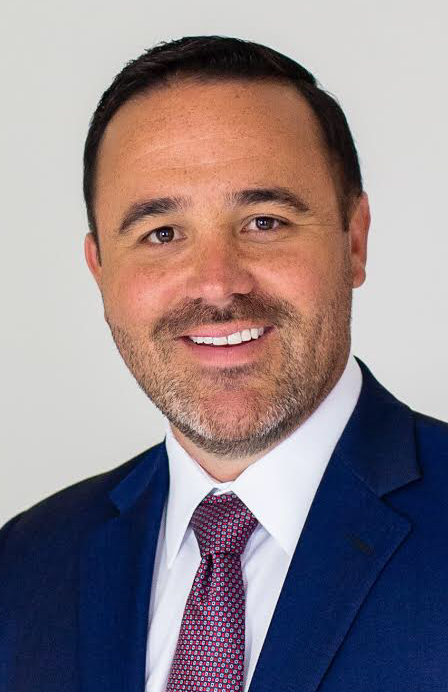
Resources CEO
Heath Mireles
is still waiting
to make the
company’s
first deal in the
Bakken. “We
would love to
have already
announced a
couple of big
blockbuster
acquisitions ...
[but] it’s going to
take time to find
the right deal,
find the right fit.”
The team’s digital platform allows it to scout at what Mireles calls the “speed and velocity of data.” The team can see wells coming online or spot areas where WNR may want to hone its economic models.
“While the basin and the rock aren’t moving or changing, the play is dynamic and things are changing there,” he said. “So, we have to stay on top of it and, you know, be able to react quickly with a high degree of accuracy.”
In October, Mireles sat in his modest Oklahoma City office, adorned only with color-coded maps of North Dakota counties, and said he prefers to keep the office undecorated. “We don’t want to get too comfortable here, in this spot,” he said.
The company, formed earlier this summer, continues to thoughtfully evaluate opportunities in this particularly dynamic time in the industry, and continues to push the theme of opportunistic patience; which Mireles admits is tough for “a guy who is fairly impatient, in general.”
“We would love to have already announced a couple of big blockbuster acquisitions,” he said. “But, you know, this game is on the large-scale side of PE vs. some companies. It’s going to take time to find the right deal, find the right fit. And it’s got to make sense for the buyer and the seller.”
Mireles has been down this road before, with another private-equity company he co-founded, Valorem Energy, which began with a Bakken focus, acquiring Linn Energy Inc.’s Bakken nonop position in 2017 (which it sold to Northern this year). In 2018, the company, now called Flywheel Energy, bought Southwestern Energy’s Fayetteville Shale businesses in Arkansas for about $1.9 billion.
While the Fayetteville deal was a great investment, he couldn’t shake his conviction for the Bakken and, prior to closing the Southwestern transaction, he left Flywheel to ultimately form WNR.
The Williston remains the company’s preferred destination. While WNR’s interest is in core acreage, Mireles said the company is also looking for what he calls Tier 1.5 rock—areas that slide from core to fringe areas.
With no shortage of good rock in the basin, he notes that at a higher price environment, the Bakken’s drillable inventory “lights up like a Christmas tree.”
“The difference of a couple of bucks on the oil price can really swing that,” he said.
Still, WNR is one of perhaps a handful of private-equity teams seriously trying to enter the Bakken. To some extent, Mireles said he prefers that.
“We see the same trend, and that’s part of what makes us so bullish about it,” he said. “We’re not going out and having to compete with 200 other private-equity teams all in the same basin. That makes life pretty hard.”
Beginning in 2010, Mireles worked for Continental Resources in various engineering and leadership roles, rising to vice president of resource development before leaving in 2017. With Continental he developed his deep appreciation of the Bakken. “I’ve spent a lot of time in a frack van in North Dakota,” he said. “We feel like we know it pretty well.”
WNR has looked at several opportunities and continues to evaluate ways to be a creative Bakken counterparty or partner for operators currently in the basin.
“Our team has the basin expertise combined with a world-class financial partner in KKR,” he said, “and a shared vision to build a premier E&P company focused on long-term value.”
Recommended Reading
Valaris Updates Fleet Status
2024-02-19 - The backlog of these contracts and extensions is valued at $1.2 billion.
E&P Highlights: Feb. 5, 2024
2024-02-05 - Here’s a roundup of the latest E&P headlines, including an update on Enauta’s Atlanta Phase 1 project.
Rystad: More Deepwater Wells to be Drilled in 2024
2024-02-29 - Upstream majors dive into deeper and frontier waters while exploration budgets for 2024 remain flat.
E&P Highlights: March 15, 2024
2024-03-15 - Here’s a roundup of the latest E&P headlines, including a new discovery and offshore contract awards.
TotalEnergies Fénix Platform Installed Offshore Argentina
2024-02-13 - First gas from the TotalEnergies-operated project is expected in fourth-quarter 2024.


